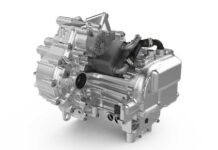
Clarios, a global leader in low-voltage battery technology, has introduced the “IdleLess” solution—an advanced battery monitoring system designed to reduce engine idling by up to 60% and save fleets thousands of dollars per vehicle annually in fuel costs.
The IdleLess system continuously monitors battery health and delivers real-time, actionable insights, allowing fleet operators to maintain optimal charge levels while cutting down on unnecessary fuel consumption and emissions. This technology is especially valuable for heavy-duty vehicles, where drivers often sleep in their trucks. With IdleLess, they can stay comfortable without excessive idling, ensuring both fuel efficiency and peace of mind.
“The Clarios idling reduction solution not only maximizes battery potential but also revolutionizes the way drivers and fleet managers understand and utilize battery power,” said Cagatay Topcu, vice president of Clarios Connected Services. “With real-time battery monitoring, advanced algorithms, and instant communication, drivers can confidently embrace idling reduction, knowing they have reliable insights at their fingertips. This dynamic approach ensures that batteries are used to their fullest potential, drastically reducing unnecessary idling and boosting overall efficiency.”
By leveraging advanced real-time data analytics through continuous monitoring of vehicle batteries, the Clarios solution enables fleet operators to reduce unnecessary idling by 60 percent, leading to annual fuel cost savings of approximately $3,300 per vehicle.
Clarios’ idling reduction solution helps fleets cut maintenance costs and optimize resource use, saving over $13,000 per vehicle over five years. The system combines battery data sensors, AI-driven predictive algorithms, and real-time communication with drivers to reduce fuel use and prevent battery-related downtime. Following a successful pilot with a European fleet, the technology has secured its first commercial contract and is now available to U.S. fleet operators.









